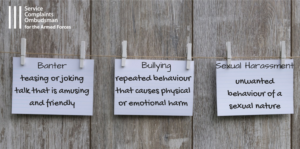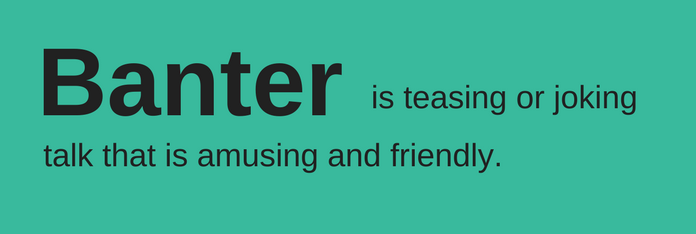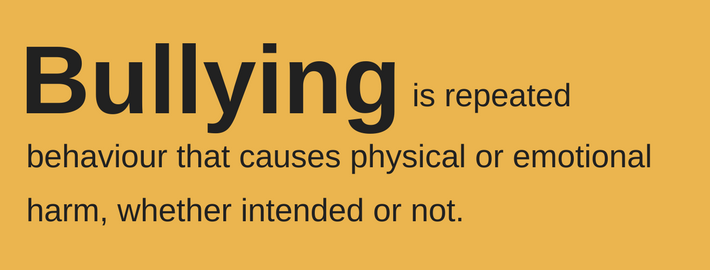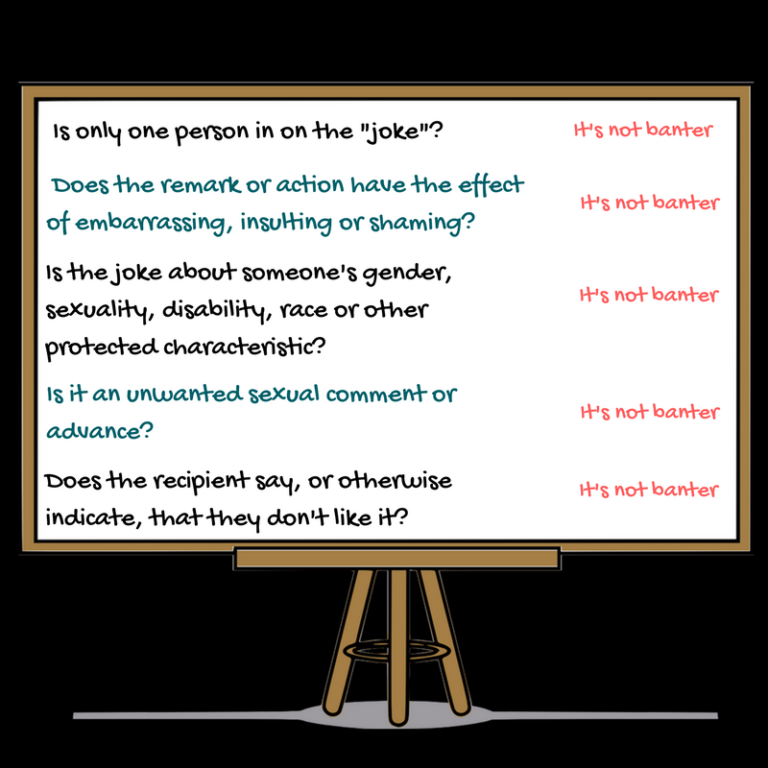It is an issue that is often discussed not only in the media but in schools and workplaces. It is also often an issue that comes up in complaints concerning bullying, or even sexual harassment. What is banter and how can you tell when it is something more serious?

Like many other Ombudsmen who oversee workplace grievance systems, I am often asked to explain the difference between banter and bullying and whether it is a fine line between the two. I firmly believe that banter and bullying are clearly distinguishable, but that many seek to minimise the latter by excusing it as “just banter”.
Banter, arguably, has an important place in British culture and can often help in developing cohesive workplace relationships. That is particularly true of the Armed Forces where personnel work closely together and need to trust each other implicitly in dangerous situations. But it is important to remember that this is only true if it is genuine banter and not something malicious in disguise.

True banter is friendly and, most importantly, an exchange. It is neither designed to nor has the effect of, shaming, upsetting, belittling, offending or otherwise making anyone hearing it uncomfortable. It is a shared joke.

Bullying, on the other hand, is none of these things – certainly not to the person who is on the receiving end! Bullying behaviour is repeated that is offensive, insulting, humiliating, abusive, intimidating or malicious. Bullying can also be the result of something that started out as banter but has been taken too far – a shared joke being aired in a public forum that humiliates a person, or teasing that crosses the line by making fun of a person’s disability etc. Bullying doesn’t require intent, what is important is the impact it has on the person being bullied.
It isn’t just bullying that is often dismissed as banter. Quite worryingly sexual harassment is often still labelled in this same way. Sexual harassment is behaviour of a sexual nature, whether a comment or an advance, which is unwanted, intimidating or humiliating. How could someone truly believe that it could ever be correctly characterised as a friendly joke in today’s society?
This makes the line quite clear, we just need to be willing to draw that line and to take steps when it is crossed. While not at all prescriptive, as there will be many other instances, the following provides a guide to how you can tell when it isn’t banter.

Distinguishing between the two isn’t about being “politically correct” or seeking to have a workplace devoid of any fun or light-hearted moments. It is simply about making the workplace a safe environment for everyone by not tacitly allowing bullying, sexual harassment and other improper behaviours, under the guise of banter.
We all play a part in addressing this issue. It is never okay for behaviour to be dismissed as “just banter” when someone has expressed their discomfort with what has been said to them. And remember – the only person who gets to determine whether someone is banter or not is the person on the receiving end of the remark.